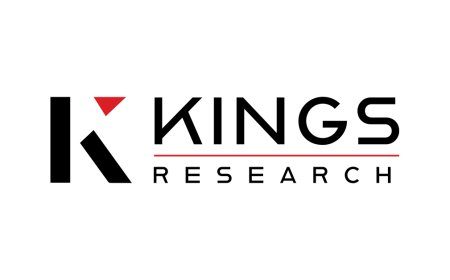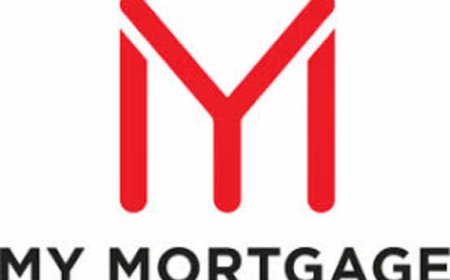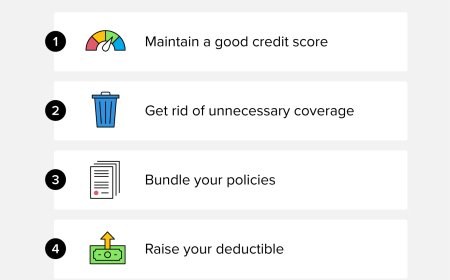How to Get Student Line of Credit RBC TD Scotiabank
How to Get Student Line of Credit at RBC, TD, and Scotiabank Introduction Obtaining a student line of credit is a crucial step for many Canadian students aiming to manage their educational expenses effectively. Financial institutions such as RBC (Royal Bank of Canada), TD (Toronto-Dominion Bank), and Scotiabank offer tailored student lines of credit designed to provide flexible borrowing options w
How to Get Student Line of Credit at RBC, TD, and Scotiabank
Introduction
Obtaining a student line of credit is a crucial step for many Canadian students aiming to manage their educational expenses effectively. Financial institutions such as RBC (Royal Bank of Canada), TD (Toronto-Dominion Bank), and Scotiabank offer tailored student lines of credit designed to provide flexible borrowing options with competitive interest rates. Understanding how to get a student line of credit from these banks can help students maintain financial stability throughout their academic journey.
This comprehensive tutorial will walk you through the process of applying for a student line of credit at RBC, TD, and Scotiabank, highlighting the step-by-step procedure, best practices, available tools and resources, real-life examples, and frequently asked questions to ensure a smooth borrowing experience.
Step-by-Step Guide
1. Assess Your Financial Needs
Before applying for a student line of credit, evaluate your educational expenses, including tuition, books, accommodation, transportation, and daily living costs. Understanding your financial requirements will help you determine the amount of credit you need.
2. Research the Student Line of Credit Options
Each bank offers unique features in their student line of credit products. Analyze the terms, interest rates, repayment options, and eligibility criteria for RBC, TD, and Scotiabank to find the best fit for your situation.
3. Verify Eligibility Requirements
Generally, to qualify for a student line of credit at RBC, TD, or Scotiabank, applicants must:
- Be a Canadian citizen or permanent resident
- Be enrolled full-time at a recognized post-secondary institution
- Provide proof of enrollment and academic standing
- Have a co-signer, typically a parent or guardian, with verifiable income and creditworthiness (subject to bank policies)
4. Gather Required Documentation
Prepare the necessary documents before applying. These typically include:
- Proof of enrollment (e.g., acceptance letter or tuition receipt)
- Identification (passport, driver’s license, or government-issued ID)
- Proof of income or co-signer information
- Academic transcripts or progress reports (if applicable)
5. Apply for the Student Line of Credit
Applications can be submitted online or in-person at bank branches. Follow these steps for each bank:
RBC
Visit the RBC website or branch to apply. You can start with an online pre-qualification to check your eligibility. An RBC advisor will guide you through the application and documentation process.
TD
TD offers an online application portal. After completing the form, you may be asked to visit a branch to finalize paperwork and provide identification.
Scotiabank
Scotiabank allows you to apply online or at a branch. Their student line of credit programs often require a meeting with a banking advisor to discuss your financial plan and co-signer details.
6. Review and Sign the Agreement
Once approved, carefully review the terms and conditions of your student line of credit. Pay attention to the interest rate, repayment schedule, and any fees. Sign the agreement to activate your credit line.
7. Access Your Funds
After approval, you can access funds as needed, usually through your bank account or special credit access mechanisms outlined in your agreement. Only borrow what you require to minimize interest charges.
8. Manage Repayments
Most student lines of credit offer interest-only payments while you are in school, switching to principal and interest payments after graduation. Set up automatic payments or reminders to avoid missed payments.
Best Practices
Maintain a Realistic Budget
Create a detailed budget to avoid borrowing beyond your needs. Over-borrowing can lead to unnecessary debt that could burden your financial future.
Keep Track of Your Spending
Monitor your withdrawals from the line of credit regularly. Utilize banking apps to track your spending and manage your credit efficiently.
Use Interest-Only Payments During School
Take advantage of the interest-only payment option while studying to reduce monthly financial pressure and prevent interest from compounding.
Communicate with Your Bank Advisor
Maintain open communication with your bank advisor to stay informed about any changes to your credit terms or if you need assistance managing your account.
Plan for Post-Graduation Repayment
Develop a repayment plan early, incorporating your expected income and expenses after graduation to ensure timely loan repayment and credit score maintenance.
Tools and Resources
Online Credit Calculators
Use online credit calculators provided by RBC, TD, and Scotiabank to estimate monthly payments, interest costs, and payoff timelines based on your borrowing amount.
Bank Mobile Apps
Download the official mobile banking apps from RBC, TD, and Scotiabank to manage your line of credit, monitor balances, and make payments conveniently.
Financial Planning Workshops
Many banks offer financial literacy workshops or webinars tailored for students. Participating can enhance your understanding of credit management and budgeting.
Educational Institution Financial Aid Offices
Your school’s financial aid office can provide guidance on borrowing responsibly and may have partnerships with banks for preferred student credit programs.
Real Examples
Example 1: Sarah’s RBC Student Line of Credit Experience
Sarah, a university student in Toronto, applied for an RBC student line of credit with her parent as a co-signer. She used the funds primarily for tuition and textbooks. By making interest-only payments during school and budgeting carefully, Sarah managed her debt well and transitioned smoothly to full repayments after graduation.
Example 2: James’ TD Student Line of Credit Journey
James utilized TD’s online application process to secure a student line of credit for his engineering program. He appreciated the flexible borrowing limits and used the TD app to track his expenses. Upon graduating, James set up automatic payments to comfortably manage his repayments alongside his first job income.
Example 3: Priya’s Scotiabank Student Credit Strategy
Priya chose Scotiabank’s student line of credit because of their competitive interest rates. She worked with a banking advisor to customize her repayment schedule and accessed financial literacy resources offered by Scotiabank. This proactive approach helped Priya minimize interest costs and maintain financial discipline.
FAQs
What is the difference between a student line of credit and a student loan?
A student line of credit is a flexible borrowing option allowing you to withdraw funds up to a set limit as needed, with interest charged only on the amount used. A student loan provides a lump sum amount that is disbursed upfront and typically has fixed repayment schedules.
Do I need a co-signer to get a student line of credit?
Most banks require a co-signer, usually a parent or guardian, to guarantee the loan. Some banks may offer unsecured lines of credit for students with strong credit histories, but this is less common.
Can I use the student line of credit for expenses other than tuition?
Yes. Funds from a student line of credit can be used for various educational expenses such as accommodation, books, transportation, and living costs.
When do I start repaying the principal?
Typically, repayment of the principal begins after graduation or once you leave full-time studies. During school, you are usually required to make interest-only payments.
How is interest calculated on a student line of credit?
Interest is calculated daily on the outstanding balance and charged monthly. Since you only pay interest on the amount you have borrowed, managing withdrawals effectively can reduce total interest paid.
Conclusion
Securing a student line of credit from RBC, TD, or Scotiabank can provide essential financial support throughout your post-secondary education. By understanding the application process, eligibility requirements, and best practices for managing credit, you can make informed decisions that safeguard your financial well-being.
Remember to evaluate your borrowing needs carefully, maintain communication with your banking advisors, and utilize available tools and resources to optimize your credit management. With the right approach, a student line of credit can be a valuable tool for investing in your future while maintaining financial flexibility.































